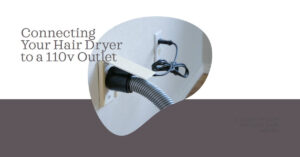Stabilizers play a crucial role in ensuring a stable power supply to our electrical appliances and sensitive equipment.
However, overloading a stabilizer can harm its performance and the connected devices. When a stabilizer is overloaded, it can lead to unstable power supply, voltage fluctuations, distorted power output, and potential damage to the stabilizer and the connected devices.
In this article, we will explore the consequences of a stabilizer overload, warning signs to look out for, how to prevent overload and troubleshooting tips.
Understanding Stabilizer Overload
Overload refers to a situation where the power demand exceeds the capacity of the stabilizer. Several factors can lead to stabilizer overload, including power-hungry devices, faulty wiring, or connecting too many appliances to a single stabilizer.
Effects of Stabilizer Overload
When a stabilizer is overloaded, it can significantly impact its performance. Voltage fluctuations may occur, leading to an unstable power supply to connected devices.
Additionally, the output from the stabilizer can become distorted, affecting the quality of power delivered to appliances and electronics.
Overloading a stabilizer can also damage the connected devices. Electrical appliances may experience reduced efficiency, overheating, or even failure. Sensitive equipment, such as computers or medical devices, may suffer data corruption, operational errors, or permanent damage.
The stabilizer itself could suffer from overheating, component damage, and complete failure.
Warning Signs of Stabilizer Overload
To identify a potential stabilizer overload, it’s essential to be aware of the warning signs. Tripping of circuit breakers, audible buzzing or humming sounds emanating from the stabilizer, heat generation, and flickering lights are common indicators that the stabilizer is struggling to handle the load.
Consequences of Ignoring Stabilizer Overload
Ignoring stabilizer overload can have both short-term and long-term consequences. In the short term, frequent power disruptions, equipment malfunctions, and increased energy consumption can be expected.
The stabilizer may struggle to handle the excessive power demand, leading to fluctuations in the supplied voltage, which can cause intermittent power disruptions and affect the performance of connected devices.
Over time, the continuous strain on the stabilizer and connected devices may lead to more severe consequences.
The stabilizer itself can suffer damage from the overload, such as overheating, insulation breakdown, and potential failure. This can result in costly repairs or the need for a replacement stabilizer.
The connected devices are also at risk. Excessive power demand can cause them to operate under stress, leading to premature equipment failure.
Repairing or replacing damaged devices can incur additional costs. Moreover, prolonged overload can create safety hazards, such as short circuits or electrical fires, jeopardizing both the equipment and the surrounding environment.
Read also my article: The Shocking Truth: Can Overvoltage Damage Your Electronics?
How to Prevent Stabilizer Overload
Preventing stabilizer overload is crucial to maintain the stability and longevity of the equipment. Here are some essential steps to follow:
- Calculate power requirements: Determine the total power consumption of all connected devices to ensure it does not exceed the stabilizer’s capacity.
- Choose the right stabilizer: Select a stabilizer with a sufficient power rating to handle the maximum load and voltage fluctuations.
- Consider future expansion: Account for potential additions or upgrades to the electrical system and choose a stabilizer with extra capacity.
- Regular maintenance and inspections: Keep the stabilizer clean, check for loose connections, and have it serviced periodically to ensure optimal performance.
Troubleshooting Stabilizer Overload
If you suspect a stabilizer overload, here are some troubleshooting steps to take:
- Identify the cause: Check the power consumption of individual devices and identify any power-hungry appliances or faulty wiring that may be causing the overload.
- Redistribute the load: Balance the power demand by connecting devices to different stabilizers or power outlets.
- Seek professional help: If the overload persists or if you’re uncertain about the cause, consult a qualified electrician or technician for assistance.
Conclusion
Overloading a stabilizer can have severe consequences, including voltage fluctuations, distorted power output, and damage to connected devices.
Awareness of warning signs and taking proactive measures to prevent stabilizer overload is essential.
By calculating power requirements, choosing the right stabilizer, and conducting regular maintenance, we can ensure a stable and efficient power supply, protecting our valuable equipment in the process.

